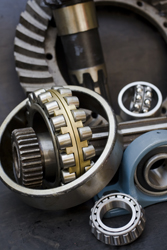Advancing ceramics with low pressure injection moulding
Today, injection moulding employing powdered materials is primarily used for the manufacture of complex components for industrial use. However, the fields of application for moulded parts made from non-clay ceramic powder have been progressively extended from within the automotive industry and precision engineering to the porcelain industry. When utilised with non-clay ceramic materials, low pressure injection moulding typically involves the successive mixing, evaporation and thermal decomposition of the powder mixture containing small amounts of gelling additives. These non-contaminant additives that can form a consistent gel by cooling the warm ceramic suspension are similar to those used in the food industry. During the AQUIMCER project, significant advances have been made in the preparation of stable aqueous suspensions of non-clay ceramic powders with an unprecedented high content of solid particles. More specifically, the solid loading of aqueous suspensions of aluminium oxide (Al2O3) powders was increased to 96wt.%. On the other hand, the use of fine Al2O3 powders with particle size of less than a micrometre (μm) reduced wear of mixing and injection equipment during processing of powdered materials. Research conducted by project partner, Ceramica Industriale F.E.R. in Italy demonstrated conclusively the potential of aqueous suspensions of colloidal Al2O3 to evaporate rapidly, while leaving behind minimal amounts of carbonaceous residues. adhesion between the binder additive and powder particles was as high as possible so that centrifugal forces arising during the injection process did not give rise to the separation of the two components. In turn, the low viscosity of these suspensions helped reduce the number and size of defects as well as shape distortion during sintering. the good injection moulding characteristics and the isotropic sintering achieved for alumina ceramics make this attractive shaping technology highly applicable to non-oxide ceramic powders, such as silicon nitride (Si3N4).



